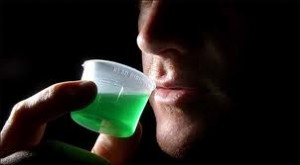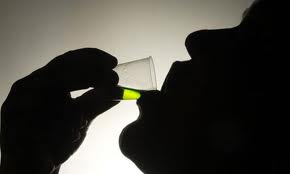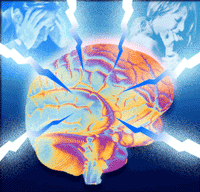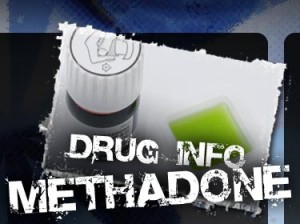
Methadone is an opiate addiction treatment that helps individuals avoid relapse by reducing drug cravings.
First administered in the early 19070s, methadone maintenance treatment has a solid track record as an effective treatment for opiate addiction. According to the National Library of Medicine, methadone maintenance treatment – a nationwide, publicly funded addiction treatment program – was the very first opiate addiction treatment approach ever developed.
Opiate effects in the brain and body warrant unique medication-based approaches for managing withdrawal symptoms. Methadone maintenance treatment works as a medication replacement therapy designed to help recovering opiate addicts manage the persistent withdrawal effects and drug cravings that occur when a person stops using. Since the 1970s, other medication treatment approaches do exist, though methadone remains the standard against which most all new treatments are measured.
Methadone, as a medication therapy, can be used as both a detox treatment and long-term maintenance solution. As a maintenance treatment approach, methadone enables recovering addicts to resume normal everyday life while engaged in the drug treatment process.
As methadone maintenance treatment only address the physical aspects of opiate addiction, ongoing psychosocial treatment combined with methadone is necessary to ensure long-term abstinence and a successful recovery.
Medication Replacement Therapy
Medication replacement therapies in addiction treatment attempt to replace the effects of an addictive drug with those of a therapeutic agent. According to the National Institute of Justice, methadone – a long-acting synthetic opiate – works as a replacement therapy for the addictive effects of opiates.
As a synthetic opiate, methadone can mimic the effects of addictive opiates without posing a high risk for addiction. Since methadone occupies the same cell receptors as an opiate drug, it can greatly reduce the severity of withdrawal effects while at the same time curbing any existing drug cravings a person may have.
Administered under strict federal regulations, methadone maintenance treatment programs must be registered with the U.S. Drug Enforcement Agency and certified by the Substance Abuse & Mental Health Services Administration. Methadone’s status as a synthetic opiate places it in the Schedule II narcotic drug category, which accounts for why these programs are so heavily monitored.
Opiate Effects in the Brain
Opiates, such as heroin, Demerol and Oxycontin, all have the same slowing effects on the body’s central nervous system. These effects originate at specific brain cell receptor sites. When activated, these sites secrete dopamine, a vital neurotransmitter chemical responsible for regulating pain and pleasure sensations throughout the body.
Opiates not only activate these receptor sites, but cause massive amounts of dopamine to be secreted. Over time, the brain stops secreting dopamine on its own as opiate effects gradually take over the job of regulating central nervous system functions. At this point, the brain and body require opiate effects in order to carry out normal bodily functions.
When a person starts taking methadone, the drug’s opiate-like effects pick up where addictive opiate drugs leave off. In this way, central nervous system functions can operate normally as the body adjusts to the absence of addictive opiates in the system.
Drug Cravings & Withdrawal Effects
For people with a long history of opiate abuse, drug cravings and withdrawal effects are the two biggest barriers that prevent a person from stopping drug use. These barriers also continue to be a problem for people who’ve been in recovery for years, oftentimes driving recovering addicts to relapse.
Methadone’s ability to address these problems accounts for why methadone maintenance treatment is an effective opiate addiction solution, according to the Centers for Disease Control & Prevention. Without some form of medication replacement therapy, the brain continues to crave opiate effects. At the same time, the lack of opiates sets off a range of withdrawal symptoms that can make life unbearable without some form of necessary treatment.
Ultimately, methadone maintenance treatment makes recovery possible for many addicts who otherwise wouldn’t be able to stop using.
Dosing Procedures
Methadone comes in disk-shaped tablets that dissolve in liquid. Unlike the multiple “hits” an addict has to take throughout the day to function, methadone’s long-acting effects only require a single daily dosage amount. The therapeutic effects from one dose can last anywhere from 24 to 36 hours.
For detox purpose, initial doses of 20 to 30 milligrams work to keep uncomfortable withdrawal symptoms, such as chills, nausea and irritability at bay. Methadone maintenance treatment doses work to prevent withdrawal effects and reduce drug cravings. These doses run anywhere from 80 to 120 milligrams.
Dosage amounts are based on the severity of a person’s addiction, medical status and his or her age. Since methadone occupies the same cell receptor sites as opiates, it can also block the effects of other opiates in the event a person tries to get “high” on other drugs.
Taper Period
Some people may only need to be on methadone maintenance treatment for a short period while other may require treatment for several years. Since the overall purpose for treatment is to enable recovering addicts to live drug-free lives, at some point a person will want to stop taking methadone.
As methadone produces opiate-like effects, a person cannot just stop taking the medication without experiencing intense withdrawal effects. Doing so places him or her at dangerous risk of relapsing back into old drug-using behaviors. For this reason, methadone maintenance treatment includes a tapering period where dosage amounts are gradually decreased over a period of time.
According to Canada’s Center for Addiction & Mental Health, tapering periods run a minimum of 12 months in length, however some people may require several years of tapering to avoid experiencing distressing withdrawal effects.
Considerations
Methadone maintenance treatment meets a vital need in terms of treating the body’s physical dependency on opiates. While breaking the physical dependency is a mandatory first step, treating a person’s psychological dependency on opiates enables him or her to remain drug-free on a long-term basis.
An effective methadone maintenance treatment program will also provide psychosocial treatment services that help recovering addicts work through the psychological aspects of addiction. Psychosocial treatments include psychotherapy, group therapy, 12-Step support groups and drug education courses.
For people dealing with chronic opiate addictions, the need for psychosocial treatment may very well last considerably longer than the need for methadone maintenance treatment. Otherwise, overlooking a person’s psychosocial treatment needs places him or her at dangerous risk of relapse, overdose and an ever-worsening state of addiction.






